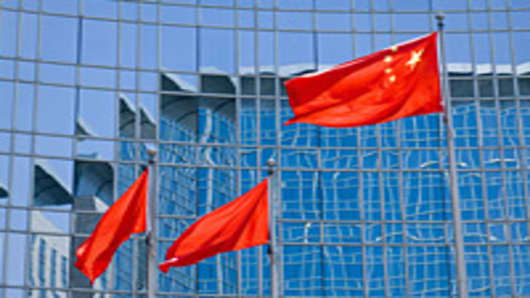Much of China’s stimulus spending during the past two years has focused on real estate development, which has created unsustainable prices and in some cases a lot of empty space. While I am a retail analyst and certainly no expert on China, a two-week trip through the mainland raised some new concerns.
It does not take a retail expert to simply look around and question what would seem obvious: Is the pace of development in the retail market (specifically luxury malls) going down the same unsustainable path?
It may or may not surprise you to know that China boasts four of 10 of the largest malls in the world. The title of the largest mall in the world is also held by China (the South China Mall in Dongguan) and guess what? It has been virtually void of tenants since it opened in 2005.
To be clear, I have been and continue to be a fan of what I consider luxury brands who are doing it right, such as Tiffany and Coach. Both are taking a measured approach, rather than diving in head-first without having a chance to really learn the market.
Let’s face it—we are only in the early stages of getting to know what the consumer in China will look like down the road. And things change fast in China. Today’s hottest part of town is tomorrow’s dud. That makes short lease commitments crucial.
Tiffany is particularly cognizant of the fickle nature of real estate and therefore is pursuing shorter term leases than in the U.S. So before you put up a fancy flagship store in the evolving hip area of Sanlitun, for example, retailers might want to weigh what the area might look like three to five years from now.
During my 2,500 mile “road trip” in China, many things surprised me about the consumer. For example, women are highly motivated by discounts, despite some surveys suggesting they might not be as bargain driven as the U.S. consumer. In one mall, Mango was having a 50-percent-off sale, and basically was the only store that was “mobbed.”
Many of our conversations with female consumers suggested that women are known to be more likely to haggle while men tend not engage in the behavior as much. Good thing for retailers men are responsible for half of luxury purchases. But the women are gaining on them.
Other observations: Just how close the salespeople stick to you—can anyone say personal space?; just how many man-bags there truly are; the widespread use of western voluptuous models as the ideal, talk about the impossible aspiration; and I cannot leave out my favorite— how men pull their shirts above their bellies to cool themselves off—really? I am thinking there has to be an untapped apparel business opportunity in that one. Can you say mesh?
But, all those surprises paled in comparison to the level of capacity coming on in the luxury retail sector, particularly malls. As I traveled from Beijing to secondary cities one word kept coming to mind: yikes!
First stop was Xi’an, which is quickly becoming a destination for luxury brands. The capital city of Shaanxi Province has a population of almost 8 million (but per capital income is actually not far off from the price of a designer bag), a close to one-to-one male-to-female ratio and a young population. It is also a huge tourist destination. Seems like all the right ingredients except for the income part.
The first mall I visited was Plaza Printemps. Ultra high-end and ultra air-conditioned. Also ultra empty. A short drive away another mall development under way. And another. Also on the high-end spectrum is Century Ginwa (60 luxury brands) and Xi’an Zhongda. The question is in second-tier cities, how many luxury malls are really necessary, and will this entice some luxury brands to fill spaces without sufficient return?
As I travelled to Chengdu, a secondary city ranked in the top 10 most luxurious cities (per capital income also around the price of a pricey Louis Vuitton bag), a steep walk up a pagoda revealed a panorama of pretty much the same theme: construction and more construction of high-end housing and retail malls.
Six malls were on schedule to open in 2010 alone, including Kaidan, the first European mall in southwest China. In fact, three of these malls were opened within one month. With more malls underway, there is no shortage of existing ones. Galleria Chengdu is one of the newest and more focused on mid-tier luxury brands (think Zara and H&M).
Maison Mode Lessin is at the higher end with Tiffany, and is in good company with Seibu and Renhe Spring Department Store. With so many retailers drawing our attention to China as the next engine of growth, we would keep an eye on who is looking too aggressive at the starting gate.
We only need to revisit the story of the South China Mall. It may be the largest mall in the world, but still remains the most vacant at 99 percent empty since its opening in 2005. The saying "build it and they will come" is not exactly a sure thing.
_________________________
Stacey Widlitzis an independent retail analyst and consultant. She has worked at UBS, SG Cowen, Fulcrum Partners and in 2005 was one of three analysts to launch the Research Department at Pali Capital, where she covered Retail and Home Video for 5 years.


